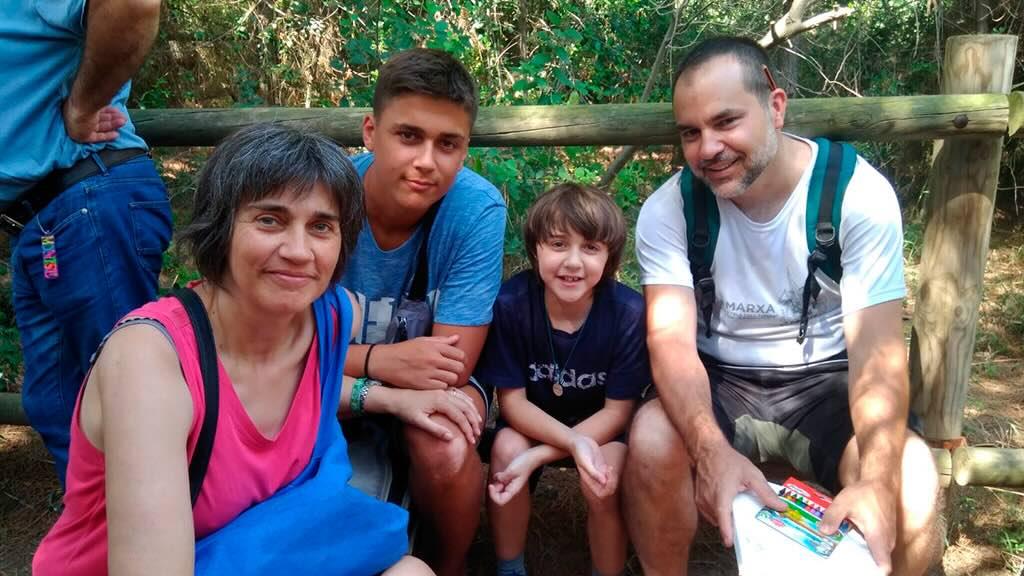The generosity of two parents allowed us to discover why some children develop two different tumours

Voluntary tissue donation by families allows us to lead investigations which help better understand the origins of childhood cancer.
The likelihood that, throughout childhood and adolescence, a child develops two different tumours is extremely low. The proof lies in the fact that, in the last 20 years, the SJD Barcelona Children's Hospital has attended more than 4,000 children with cancer, and only 25 of them had developed two different tumours.
One of these children was Marta. Throughout her short life—sadly passing at ten years old—, Marta and her family had to battle two different cancers. The first was a high-risk neuroblastoma, with which she was diagnosed at only 17 months old. Although this type of pediatric cancer is very aggressive, the young girl was treated successfully and was able to overcome the disease. After recovery, she resumed her normal life: she started going to school like other children her age; she took up swimming; and she joined a football team, her great passion. ‘She was a very active girl. Looking at her, nobody would have known she had been sick,’ explains Marta’s mother, Rosa.
Eight years after the first diagnosis, however, the family suffered another blow, receiving the terrible news. ‘In January 2019, Marta started having stomach pains. We thought she had gastroenteritis because it had been going around at school, but while all the other children started getting better, she didn't. We took her to the pediatrician and were trying to figure out what was going on when it was time for her check-up appointment at the hospital. They performed an MRI and found something wasn't quite right,’ recalls Rosa. Marta was diagnosed with another type of cancer, this time a malignant rhabdoid tumour that had nothing to do with the neuroblastoma she had been diagnosed with as an infant – and this one was even more lethal than the first.
Her parents, who have been fundraising for childhood cancer research ever since Marta's first diagnosis, decided to go even further with their contributions to learning about the disease. ‘When doctors told us there was nothing they could do, we considered donating Marta’s tissues. We asked the doctors if that would be possible and what we would have to do in advance for when the time came. We knew that Marta being able to overcome the first tumour was thanks to the knowledge doctors had gained from other cases. And we wanted no other children to go through what Marta had to,’ recounts Rosa.
‘We were all devastated by Marta's passing,’ recalls Jaume Mora, one of the oncologists who treated the girl at the SJD Barcelona Children's Hospital. ‘We had never seen a case like it. When she passed, I promised her parents that we would never forget her, and that we would not stop until the day we found out what had happened. And we did, all thanks to the generosity of Marta’s parents. Of their own accord, they decided to donate samples of all of the girl's tissues. Back then, we did not have the technology to properly analyse them and find out the origin of her tumours, but now, almost five years later, we do. These samples, alongside the tumour sample from years ago, are the key. SJD boasts one of the largest pediatric tumour banks in Europe, containing over 4,000 samples.
Thanks to this selfless act by Marta’s parents, and the drive and steadfastness of our researchers, now we have discovered why some children develop more than one tumour. Marta's case was the first of four that researchers at the SJD Research Institute (IRSJD) and the Institute for Research in Biomedicine (IRB Barcelona) were able to study using advanced genome sequencing techniques. Results of the investigative work have recently been published in the Cancer Discovery journal.
Three mechanisms are responsible for secondary pediatric cancers
Researchers have identified three different mechanisms that trigger two separate tumours in some children throughout their childhood and adolescence. In Marta's case in particular, it was a single abnormality in a very primitive embryonal cell which gave rise to both tumours. ‘Data suggest that the treatment we gave for the first tumour, the neuroblastoma, managed to slow down the rhabdoid tumour for a time, because normally these kinds of tumours appear in the first two years of life, and not at nine years old like in Marta’s case,’ explains Dr Mora. ‘We also know that there is nothing we could have done to avoid it, and that has given us some solace, both us and the parents,’ he adds.



